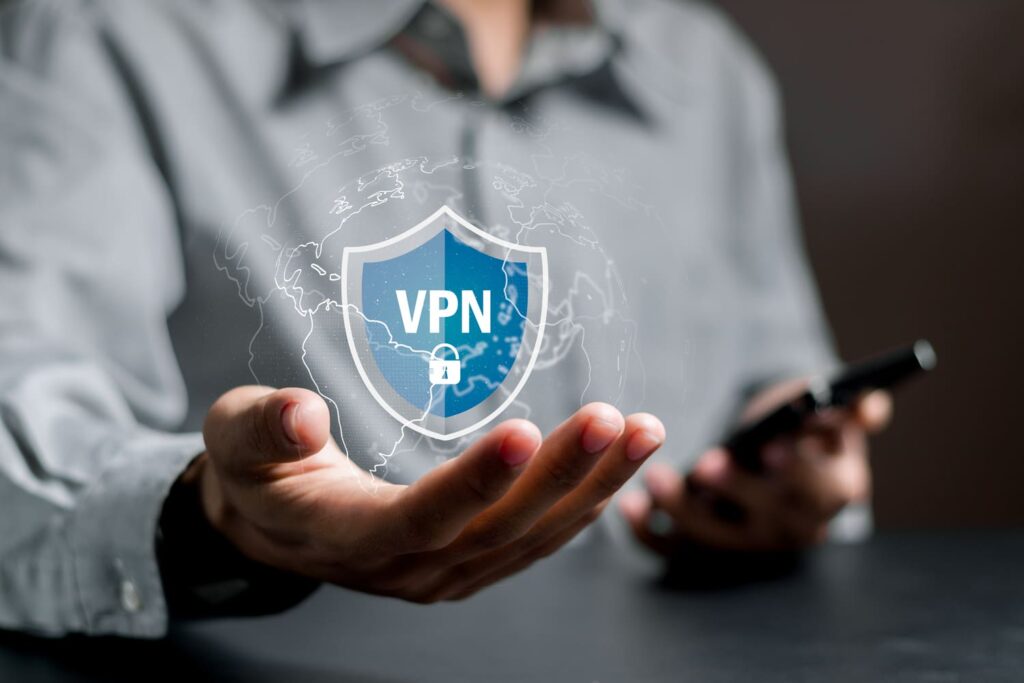1. Introduction
Turning a blind eye to danger doesn't make it invisible; it only makes it more devastating when it reveals itself.
Imagine a threat operating within your infrastructure for nearly seven weeks undetected. IBM report , in 2023, the average time to identify a data breach was 204 days, with an additional 73 days until containment, totaling a staggering 277 days of exposure .
This data reveals something critical: many companies are still trying to defend against modern attacks with tools from the past . Traditional antiviruses operate based on signatures and only react to what is already known. The problem is that today's threats are multi-vector, disguised, and too fast for this type of approach.
As IT environments become more distributed, with endpoints , cloud, network, and email , the need for a defense that sees the big picture, connects the dots, and reacts intelligently grows. This is where XDR comes in: a new protection strategy that replaces a fragmented view with an integrated and automated response.
In this article, we'll understand why antivirus has lost its prominence, how XDR responds to the complexity of modern attacks, and what to consider to take this leap in maturity in your company's digital security.
Enjoy!
2. The end of antivirus: an inevitable milestone
For a long time, antivirus was like a good lock: you just had to install it and keep everything updated to sleep soundly. But times have changed , and with them, the way digital attacks occur.
According to the Ponemon Institute , 68% of companies have been the target of successful attacks on their endpoints , even with active antivirus software. This data reveals that modern threats don't ask for permission to enter. They disguise themselves, operate silently, and often escape through the same paths that antivirus software promised to protect .
Traditional antivirus software works like a doorman, only blocking those it already knows, using signatures , which are catalogs of known threats. But what happens when the attacker changes their identity or uses the credentials of someone authorized? That's where the risk lies. And it's precisely this type of risk that cybercriminals exploit today , with attacks that move between systems, use multiple stages, and follow no pattern.
Today, the role of antivirus software has changed . It's gone from being a protagonist to a supporting role , and this shift isn't just technological, it's strategic. Those who still insist on the old model are, without realizing it, giving up visibility, response time, and control.
From this shift, new solutions emerge, such as XDR ( Extended Detection and Response ), built to see what antivirus can't and react where it can't. Let's understand how this evolution happened.
3. The evolution of defenses: from antivirus to XDR
Digital protection is no longer static: it evolves with attacks , and companies that keep up with this trend are always one step ahead. Traditional antivirus was an early milestone , offering a barrier against known threats. But as attacks became more dynamic and less predictable, the need arose for a more attentive, continuous, and intelligent approach.
This is how EDR ( Endpoint Detection and Response was born , a technology that significantly expanded visibility into endpoints , the devices where most attacks begin . With EDR, companies gained the ability to monitor suspicious behavior, isolate threats, and act quickly before they spread. For many organizations, it remains the first major leap toward more proactive security.
But as IT environments become more interconnected , uniting networks, cloud, email , and applications, a new challenge emerges: attacks that span multiple fronts and are not limited to a single entry point. In these scenarios, acting solely on the endpoint is no longer enough.
This is where XDR comes in; not replacing EDR, but expanding it . XDR connects different layers of the digital environment, correlates data from multiple sources, and automates responses based on the full threat context.
While EDR is like a smart security camera at each door, XDR is the monitoring center that sees the entire house, cross-references information, and acts precisely.
This evolution is less about replacing a tool and more about expanding defense capabilities in increasingly complex environments. Understanding this difference is what allows for coordinated, precise, and real-time responses.
But how does this advancement translate into the day-to-day operations of security teams? It's time to move beyond the conceptual framework and consider the impact of XDR on real-world operations.
4. What changes with XDR in practice
Imagine trying to put together a jigsaw puzzle with pieces scattered across different drawers. This is how many companies still operate their digital security: with tools that don't communicate with each other, disconnected alerts, and investigations that begin in the dark .
XDR turns this logic on its head. It puts the pieces together in real time, connecting endpoints , network, email , applications, and the cloud, to transform a sequence of noise into a clear alert, with context, cause, and consequence . Instead of scattered reactions, what you get with XDR is an orchestrated response, based on everything happening in the environment.
In the routine of security teams, this change is palpable . That avalanche of alerts that required manual triage begins to make sense. Risk signals no longer compete for attention and are prioritized based on criticality. What once took hours to investigate is now resolved in minutes, and with greater confidence in the decision .
This ability to cross-reference information and respond intelligently changes the way we approach threats. But it's only possible because XDR combines specific capabilities designed for complex environments and unpredictable threats.
In the next section, we'll explore these features in detail and understand what makes XDR indispensable in a modern cybersecurity strategy!
5. Features that make XDR indispensable
While talking about the evolution of digital security may sound "abstract," XDR translates this into concrete actions, with features that directly respond to the challenges of modern environments .
Below, we detail the pillars that make this technology decisive for companies that can no longer operate in the dark.
5.1. Advanced multi-vector threat detection
Cyberattacks rarely follow a single path. These days, they often begin with a email , progress to the network, and only then reach critical servers or cloud systems. This interlayered movement , called a multi-vector attack, challenges any solution operating in isolation.
Fortunately, XDR was designed to address this type of threat: it integrates data from multiple sources ( endpoints , network, cloud , identity, email , etc.) to identify coordinated activities that, individually, would seem harmless. This contextual view is essential for detecting advanced attacks in a timely manner.
The MITRE ATT&CK Framework highlights how lateral movement is a common tactic among attackers, especially when there are integration gaps between defense systems. The ability to correlate events across layers is therefore a key differentiator in containing this type of attack before it compromises critical assets.
5.2. Event Correlation and Automated Response
One of the biggest pain points for security teams is the excess of disconnected alerts . When each tool points to a different risk without communicating effectively, time is wasted trying to piece together a puzzle without a real reference image.
XDR solves this by automatically correlating events from different sources. It connects the dots, identifies cause-and-effect relationships, and acts in an orchestrated manner: isolating a device, blocking suspicious traffic, triggering scripts , or prioritizing notifications to the team based on the criticality of alerts.
According to research from Enterprise Strategy Group (ESG), approximately 81% of organizations report that alert automation and correlation via XDR significantly improve incident response times , especially in a scenario of staffing shortages and the use of multiple data sources.
Additionally, the same study indicates that XDR reduces redundant alerts, increases visibility into coordinated threats, and accelerates operational incident response, improving the overall effectiveness of security teams.
5.3. Compliance and regulatory support
Information security is no longer a technical choice; it has become a legal requirement . Laws such as LGPD, GDPR, HIPAA, and standards like ISO 27001 require not only active protection but also logging, traceability, and documented incident response.
XDR offers just that: every detected event and every action taken is recorded in a structured and auditable format compliance processes , and strengthens trust with customers, partners, and regulatory bodies, especially in sectors such as Healthcare, Finance, and Critical Services.
5.4. Optimizing the work of security teams
The cybersecurity workforce shortage is a global reality. By 2024, the estimated deficit was around 4.8 million professionals, according to the (ISC)² Cybersecurity Workforce . This means that, even with more than 5.5 million active specialists, there is still a significant gap between supply and demand in the sector.
In this scenario, teams need to be more efficient with fewer resources , and XDR is a key ally in this mission. Its technology helps reduce false positive noise, consolidates alerts into a unified dashboard, and automates much of the incident response. This frees analysts to focus on what really matters: investigating, making decisions, and planning medium- and long-term strategies.
Furthermore, by centralizing information and prioritizing risks based on criticality and context, XDR reduces the emotional and operational burden on teams. This allows for more focused, proactive action, with less unnecessary urgency.
These features demonstrate that XDR isn't just an additional layer in the security architecture, but the connecting point between everything that already exists and what needs to evolve. It transforms data into decisions, noise into priorities, and alerts into concrete actions.
But beyond technical capabilities, what does XDR actually deliver for operations? That's what we'll explore now.
6. Strategic benefits of XDR for your operation
By adopting XDR, companies aren't just modernizing their protection: they're changing the way they approach digital security , moving from something reactive and fragmented to an integrated, intelligent, and operationally aligned approach.
With XDR, security ceases to be a hindrance or a source of constant urgency and becomes a direct ally of continuity and growth . Here are the main benefits of this approach:
- Reduced exposure time and critical disruptions : With faster, context-based responses, XDR shortens the time between the first sign of risk and incident containment. This protects operational flows and ensures that an isolated threat doesn't paralyze the entire enterprise.
- Minimizing financial and operational losses : Data breaches and attacks like ransomware cause direct losses , such as lost productivity, service downtime, and reputational damage. XDR acts at the earliest signs of an attack, limiting its reach and preventing it from compromising critical areas of the company.
- Greater stability and resilience in everyday life : By operating continuously and in an integrated manner, XDR reduces invisible risks that silently compromise operations. It supports business continuity, even in dynamic and distributed environments, ensuring security without hindering processes.
- Scalability without increasing complexity : As a company grows, new systems, users, and units enter the scene. XDR can accommodate this growth without requiring stacking tools or redesigning the architecture. It maintains efficient protection, even with more variables at play.
- Smarter decisions with less operational strain : With consolidated data, prioritized alerts, and reduced noise, XDR frees teams to act more strategically. This means less effort on manual triage and more time to anticipate risks, plan improvements, and make evidence-based decisions.
- Supporting compliance in a fluid and auditable manner : XDR documents every step of detection and response, simplifying audits and enhancing transparency regarding standards such as LGPD, ISO 27001, and industry requirements. This means security becomes part of governance, not a bottleneck.
This operational maturity isn't a side effect of technology: it's the direct result of an approach that unites security, automation, and context into a single, continuous, and intelligent flow. But for XDR to deliver all this value, you need to understand if, and when, your company is ready to take this leap .
7. When is your company ready for XDR?
Every technology has its right moment, and when we talk about XDR, that moment usually begins not with a serious incident, but with subtle signs that the current model no longer meets the business reality.
It could be an increase in alerts without a clear explanation, or the frustration of investigating the same type of threat through different avenues, in systems that don't communicate with each other. Or the realization that, with each new digital project, a new, invisible vulnerability .
In other words: the shift to XDR begins when the complexity of the operation exceeds the responsiveness of your current security.
See if any of these scenarios sound familiar:
- The team spends more time investigating than acting , because each tool shows a different part of the problem;
- Risks move between cloud, network, email , and endpoints , and security can't keep up;
- Audits ask for records that require hours (or days) to compile manually ;
- The company grows, but each new system requires a different solution to be protected;
- Prevention works until something goes unnoticed , and no one understands how it happened.
If you recognize this scenario, your company may already be more than ready. Because XDR isn't just an "extra layer": it's a strategic shift . It's a new way of seeing, prioritizing, and acting.
8. How Skyone delivers intelligent protection with XDR
At Skyone , we believe that security isn't just about tools, but about applied intelligence, end-to-end visibility, and context-based decision-making . Therefore, our XDR model goes beyond the technical basics: it combines expanded detection with coordinated response, all within a natively integrated architecture.
Our solution is supported by three fundamental pillars:
- True cross-layer connectivity : We integrate key attack vectors ( endpoints , network, cloud, email , and identity) into a single protective mesh. This eliminates operational silos, expands detection capabilities, and allows responses to occur where the attack truly advances.
- Automation with true intelligence : We automate response without losing critical thinking. This means containment, blocking, and remediation actions occur in real time, based on context, supported by global threat data and local telemetry. Security gains speed without sacrificing accuracy.
- Experts alongside, not apart : with our team, you're not alone in a crisis. We offer continuous operations, strategic reporting, and advisory support to help your company evolve in security maturity, focusing on what really matters: resilience and continuity.
This is what sets Skyone apart : combining advanced technology and strategic vision so that XDR is not just an additional defense, but a vector of transformation .
Want to see how this model fits your company's needs? Speak to a Skyone specialist now and find out how to take the next step in your intelligent protection journey.
9. Conclusion
The logic of traditional antivirus no longer reflects reality. In a scenario where threats are fast, stealthy, and distributed, waiting for known signatures is the same as reacting too late. Therefore, XDR emerges as a response to this disconnect: a solution that not only detects, but also understands, correlates, and acts in real time, based on context and prioritization .
Throughout this article, we've seen that XDR represents more than a technology: it symbolizes a new defense mindset , driven by intelligence, automation, and cross-layer integration. A necessary shift for companies that need to grow without sacrificing security, scale without losing visibility, and innovate responsibly.
At Skyone , we combine technology and strategy to ensure this advancement happens smoothly and purposefully . Our approach seamlessly connects security and business, with human support and intelligence applied to every decision.
If you enjoyed this article, why not complement your journey? To that end, we recommend reading this other article published on our blog Endpoint Security Solutions for Immune Companies."
FAQ: Frequently Asked Questions about XDR
With the increasing complexity of cyberattacks, the term "XDR" has gained prominence in digital security conversations, but not always with the clarity it deserves.
If you still have questions about what this technology means, how it differs from other solutions, or what to expect in practice, this section is designed to directly and strategically answer the most frequently asked questions .
1) What does XDR mean in practice?
XDR ( Extended Detection and Response) is an integrated cybersecurity approach that connects different layers of the digital environment (such as endpoints , network, email , cloud, and identity) to detect, correlate, and respond to threats in a coordinated manner. In practice, this means greater visibility, agility in response, and reduced operational risks through automation and contextual intelligence.
2) What is the difference between EDR and XDR?
EDR ( Endpoint Detection and Response) focuses on protecting endpoints , such as computers and servers, offering local detection and response. XDR expands this reach by integrating multiple data sources into a single view. It allows you to identify more sophisticated attacks that span different vectors and respond with greater precision and speed.
3) How does an integrated XDR work?
An integrated XDR continuously collects and cross-references data from different sources, generating real-time visibility across the entire attack surface. It uses threat intelligence and behavioral analysis to detect suspicious activity, prioritizes risks based on criticality, and automates responses such as machine isolation or traffic blocking. All this in a single platform, reducing noise and increasing protection effectiveness.





